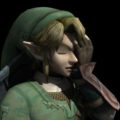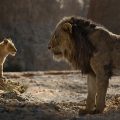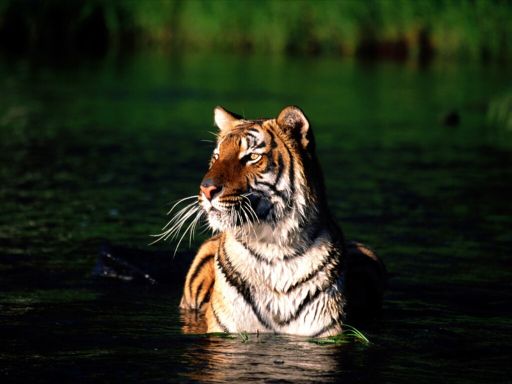Random Roar: Disney Has No Clue What To Do With The Lion King, Do They?

With the announcement that there’s going to be a sequel to the CGI animated version of The Lion King, and the unclear information about whether it’s going to be a remake of The Lion King II: Simba’s Pride or a prequel that will once and for all explain how Scar got his scar (please let it be better than this), I have begun to realize something that I should’ve realized a long, long time ago.
Disney has no idea what to do with The Lion King, and perhaps they never knew.
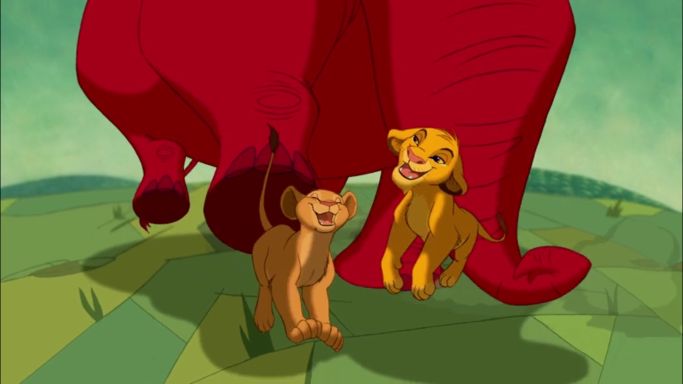
The Origin of the King
They didn’t know back in the early 90s, even, back when the project was being developed alongside Pocahontas. Given how successful The Little Mermaid, Beauty and the Beast and Aladdin were, and that Oliver & Company and The Rescuers Down Under, both animal stories, didn’t achieve the same success, it isn’t surprising that most of the animators working for the company wanted to work on Pocahontas, since it was looking like the next major blockbuster project, with The Lion King looking like it would be a low success, fluff piece.
Of course, the hindsight of history shows us that Pocahontas ended up being the start of Disney’s slow decline in the latter half of the decade, and The Lion King became the most successful animated film of all time for a bit. And for a year or two, it looked like Disney did know what to do with the property. In fact, to this day, Disney releases Lion King merchandise as it continues to be a very popular franchise for them.
In 1995, Disney did something they’d never done before and released a follow up CD to the Lion King soundtrack. Titled “Rhythm of the Pride Lands”, it was promoted as having music inspired by the film. Included on the CD was a new version of “Hakuna Matata” featuring reggae singer Jimmy Cliff, a song called “Warthog Rhapsody” which was cut from the film (probably the first time they’d rescued a song from the cutting room floor like that), and several songs which were inspired by the score (“Lala”, “Lea Halalela” and “Busa”) and message (“He Lives in You” and “It’s Time”) of the film.
It was all downhill from there.
The first sign that Disney had no clue what to do with this surprise hit of theirs came when they developed a television series based on two of the characters, Timon & Pumbaa. Unlike shows like Aladdin and The Little Mermaid, which tried to fit within the canon of the original movies, The Lion King’s Timon & Pumbaa was a comedy show which inexplicably featured the titular pair helping flying squirrels find love in Canada, earning three wishes from an enchanted whale, teaching a tigress how to hunt, helping reunite a panda family in China, and so on. Throughout the series and unlike in the original film, humans were a constant presence.
Interestingly enough, one of the songs featured in the series later became a Final Fantasy theme song. Go figure.
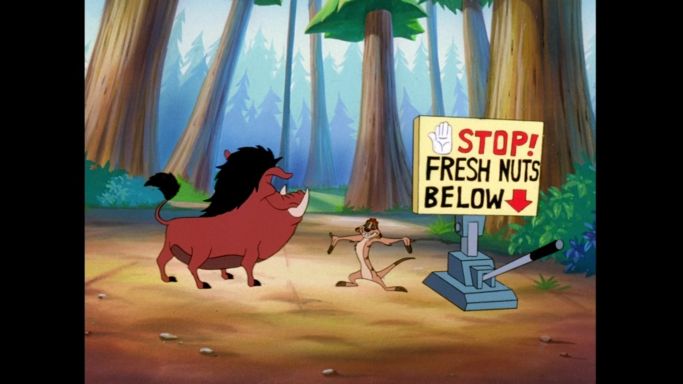
This series also contributed to the decline of the Disney Afternoon and along with shows like Quack Pack and The Shnookums & Meat Funny Cartoon Show*, revealed that their well of creativity might have begun to run dry, having developed and produced a brand new animated show every year for the programming block.
The Lion King was also one of the first movies to get a direct-to-video sequel. After the pair of Aladdin sequels proved that it could be done, Disney began to make a ton of sequels of varying quality. The Little Mermaid II: Return to the Sea was as close to the nadir as you can get during this period of time, but The Lion King II: Simba’s Pride was almost as bad. It was made by a studio that likely was only familiar with the movie in as much as they might’ve watched it once or twice, and it showed. Mufasa took on a more God-like characterization in this film (the Christian God, I mean) in that he didn’t answer anyone directly, made it clear that he had a plan he’s not telling anyone and communicated with Rafiki through signs and not through actual dialogue, leading to the mandrill having to interpret his intent. And then despite that Kiara was the one who did all the work, he ended the film with a “Well done, my son.” Wait, well done? Simba stood in the way of your plan every step of the way, Mufasa! Unless that was part of your plan all along, hardening Simba’s heart so that he would do exactly as you needed him to do, like he’s the pharaoh of Egypt from the book of Exodus, I don’t see how that’s a well done anything!
Simba’s Pride introduced us to Zira, Scar’s mate, and tried to act like she was there all along, but we never saw her during the battle for Pride Rock in the original film. Just like the ominous pipe organ from Beauty & the Beast: The Enchanted Christmas or Ursula’s skinny nothing of a sister in The Little Mermaid II, Zira came out of nowhere and we’re expected to assume she was around all along.
The movie’s writers also didn’t understand the original film’s humour, and included lines in the script such as “Somebody’s gotta get a beeper for this kid!” Where Timon could’ve heard about beepers in the Pride Lands, I don’t know. (To be fair, Zazu knew about throw rugs in the original film.)
The film featured a song from Rhythm of the Pride Lands, but shortened it down by quite a bit. “He Lives In You” was butchered and destroyed, cut down to three minutes, as if they didn’t want to animate its entire five minute length. In comparison, “Circle of Life” from The Lion King was very close to four minutes. “Once Upon A Time In New York City” from Oliver & Company was a solid four minutes. It took three and a half minutes to open Robin Hood. I don’t think it’s that much of an ask for someone to sit through a five minute opening sequence. Disney clearly used to have faith in an audience’s attention span.
No official soundtrack was released for Simba’s Pride, but the “Return to Pride Rock” CD contained songs “inspired by” the film. Most of the songs were lifted from the movie, making it a soundtrack in all but name. The songs that were supposedly inspired by the movie were instead taken from Lebo M.’s CD “Deeper Meaning” with little to no relation to any part of the Lion King franchise.
There’s a six year gap between Simba’s Pride and the third part of the original Lion King trilogy, The Lion King 1 ½ (in some markets, The Lion King 3: Hakuna Matata). In that time, the studio that animated the second film took the time to write a story that both paid homage to the original film and made fun of some of the sillier elements of it, making it clear that they finally understood The Lion King. They also rewrote “Warthog’s Rhapsody” from the point of view of Timon, thus firmly securing the song’s place in the franchise.
The Lion King 1 ½ is pretty much the brightest spot in the franchise after 1994.
*Although The Shnookums & Meat Funny Cartoon Show was made independently of The Disney Afternoon, it was aired as part of the programming block in some markets
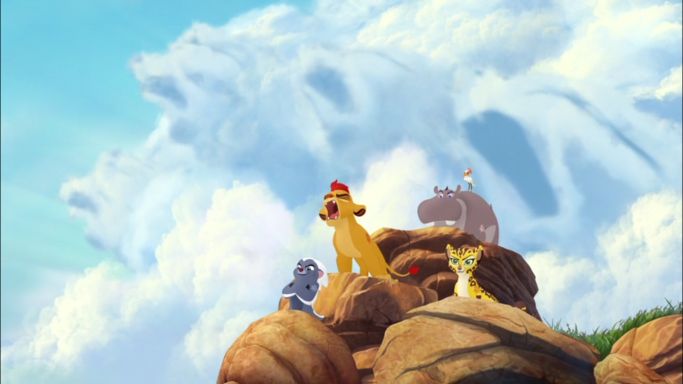
The Next Generation
Everyone would’ve been happy to leave it like that. It would give The Lion King a high note to finish on, but then Disney just can’t leave well enough alone, can they? In 2016, a brand new series set during the second movie began to air on Disney Junior, preceded by a made for TV hour long special called Return of the Roar. The Lion Guard starred Simba and Nala’s second cub, named Kion, and tasked him with the important responsibility of leading a group of lions that must defend the Circle of Life. He’s gifted with the “roar of the elders” which is a powerful roar that blows enemies away.
Instead of lions, Kion appointed his friends in the roles of “fastest” (Fuli, a cheetah), “keenest of sight” (Ono, an egret), “strongest” (Beshte, a hippo) and “makes me want to stab his annoying, stinky ass repeatedly” (Bunga, a honey badger, the so called “bravest”).
This might not have been so bad, as long as the show was treated at least as seriously as The Lion King 1 ½ was, but from the very first episodes, it became clear that whoever made it might not have watched the source material. Despite establishing that the hyenas had moved on in Simba’s Pride, the main antagonists in those early episodes were hyenas. A trio of male hyenas led by Janja would prove to be a minor thorn in Kion’s side until he roared them away. They’d be back in the next episode, but a roar would almost always end whatever their current plan was.
The early episodes also made it clear that the studio either couldn’t or didn’t want to bring back the same voice talent as before, so Simba sounded like a generic older white dude with a much deeper voice than he should’ve had at that point in his life. Up until The Lion Guard, they hadn’t replaced Simba’s voice in the movies, but Cam Clarke played him in The Lion King’s Timon & Pumbaa as well as in various video games like Kingdom Hearts II, so they could’ve asked him to reprise the role again for the television series and given Simba a more authentic voice. He lent his voice to a vulture in The Lion Guard, so clearly he was available.
Given that the series took place during the second film, one of its many missed opportunities involved Zira. Supposedly she was running around in the Outlands, but she only physically appeared in one episode of the show, where her and her pride were roared away by Kion. We heard about her imminent attack at the end of season three, which gave Kion an excuse to return to the Pride Lands and try to defend it. When he got there, he found out that the end of the film played out in his absence and Zira’s pride were not only allies, they’re the new Lion Guard.
Even though the series took place during Simba’s Pride, I got the impression that no one who developed it had actually seen the movie. As was stated before, the Outlands were chock full of hyenas (two different packs of them, in fact!). Mufasa was changed once more, too. He was no longer God from the Bible. Instead, he’s on Kion’s speed dial and can be called upon at any time. Rather than having a plan and seemingly knowing everything that’s going on, Mufasa was like Wilson from Home Improvement, offering advice if needed and just generally being a good neighbour. When Scar returned in season two, Mufasa still needed to be told about it. Apparently, when Mufasa told Simba that the great kings of the past would be watching over him, he didn’t mean literally all the time, or even most of the time, and even for Kion, Mufasa’s only there if Kion calls out for him.
Maybe Kion had special access to the kings of the past thanks to his position as leader of the Lion Guard, but the rest of the franchise suggested that these kings of the past would be watching over all the lions, or at the very least, all of the royal lions, and this simply hasn’t been the case.
With all of this said, and despite that some of the episodes felt like crappy wastes of space that were only written to fill a spot in the episode order, there were occasional glimpses of something absolutely brilliant. One episode even got one up on My Little Pony: Friendship is Magic by teaching its audience that it’s okay for friends to want to have some alone time. “Fuli’s New Family” attempted to teach kids not to be overbearing in your pursuit of friendship, and that it’s okay to have some alone time in your life. That’s a lesson that a lot of people need to hear, since trying to be around every single day for someone can be seen as smothering and kind of desperate and can turn off potential friends. If a friend asks you to give them some space, they need that space, and you shouldn’t act like you’ve been personally insulted.
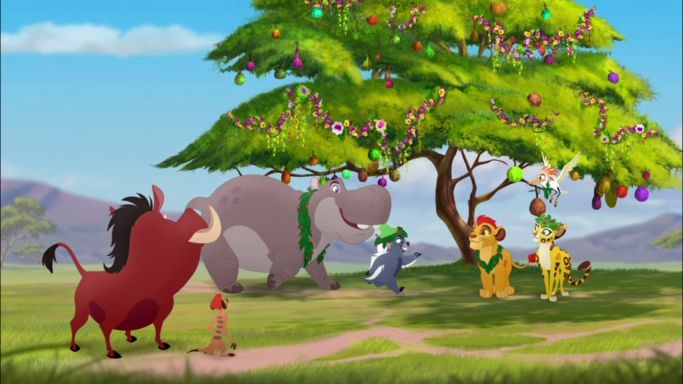
Speaking of My Little Pony: Friendship is Magic, both it and The Lion Guard elevated abstract concepts up to damn near religious heights. In Friendship is Magic, it’s in the title. Friendship is everything, and if you don’t want to spend time with your friends or constantly make new ones, something is deeply wrong with you. The power of friendship can apparently defeat all villains and solve all problems. All it took was for Twilight Sparkle to deliver an inspiring speech, and bad guys turn good, wrongs are righted and fences are mended. That’s not to say the series didn’t teach important lessons. “Griffon the Brush-Off” is a great lesson about knowing when to break off an old friendship. Sometimes people change, but their friends don’t, and in the case of Rainbow Dash and Gilda, the two had drifted apart and it was clear that they couldn’t really be friends any more. If you know that your friendship with someone has changed, it’s okay to break it off. You don’t fail by not being able to be friends with them.
Then they decided to mend that broken fence a few seasons later, negating the lesson entirely.
In The Lion Guard, the abstract concept that got elevated to religious status was the Circle of Life. In the original film, the Circle of Life was described sort of like the food chain. Mufasa acknowledged that lions eat antelope, but when lions die, their bodies decompose and eventually fertilize the soil and when grass grows from that soil, antelope eat it. It was a very simplistic way to describe the myriad ways in which even those at the top of the food chain are still a part of it, but it was also a good way to admit that lions eat meat and that some of their royal subjects are going to be on the menu sooner or later.
In The Lion Guard, anything that tried to kill another living being was seen as being against the Circle of Life. A first season episode acknowledged that Fuli needed to hunt just like any other carnivore, but beyond that, hunting was bad. Fauna are friends, not food. Many of the prominently featured prey animals were given names, and there’s even a funeral held to honour an elephant who died in one episode. I admire the restraint of every carnivore who attended, because that’s a lot of meat to let sit there while everyone mourns.
Disrupting the Circle of Life seemed to be one of Janja’s main goals, but since he was trying to fight against an abstract concept and he’s not too bright, it felt like it was just an excuse for him to invade the Pride Lands and chase some animals around every so often. The constant threat to the Circle posed by various villains in the series got old after a while when a lot of the time, their plans were functionally the same, from one episode to the next.
I remember feeling like Kingdom Hearts II was being a little ridiculous by having Scar’s ghost haunting Simba when Sora returned to the Pride Lands later on in the game, but The Lion Guard made such a plot point kind of plausible for the franchise, even if it’s kind of stupid. Once Scar was resurrected, it seemed like the series might grow up a little, since an actual threat to the Circle of Life had arrived. That said, the writers didn’t know what made Scar an effective enemy, plus Kion was always expected to win, so Scar was nerfed for most of the season and he was stuck dealing with ineffective henchmen. It was his personal intervention that made his plan to kill Mufasa work, and his plan to kill Simba and Nala nearly worked if not for Mufasa rescuing them, but the best he could do now was to have Zazu kidnapped so his henchmen could ask him about Simba’s most embarrassing secrets?
To be fair, a few of Scar’s plans were almost up to the standards of the original movie and he even won once or twice, but eventually each episode’s plot became that Scar was sending his minions to attack and Kion and the gang had to defeat them.
Zira was once again a missed opportunity here. If she’d discovered the return of Scar, she could’ve joined forces with him and become quite the threat to Simba, Kion, the Pride Lands, and the Circle of Life. But despite that this was the only part of the franchise where Scar and Zira both appear, Zira never found out that Scar was briefly a ghost living in a lake of lava.
Kion defeated Scar for good at the start of season three after several filler episodes at the end of season two that could’ve been skipped, but received a scar similar to Scar’s and became worried that the snake’s venom was going to make him turn evil because that’s what happened to Scar. He got moody, yelled angrily at his friends sometimes and his self-esteem took a big hit. He was basically going through puberty, but his friends were all pretending it was the snake’s venom. Well, Bunga honestly thought it was the snake’s venom, but then he was never very smart to begin with.
In order to cure the imaginary venom, Kion and the rest of his Guard traveled to the Tree of Life. Their first stop out of the Pride Lands? The mountains of Japan, followed by a stop in China. …yeah, for a series that used Ono as a mouthpiece for teaching its audience various facts about animals, they could’ve used a little bit of a brush up on geography. The journey to the Tree of Life traced a generally easy to follow path through Asia, but began by somehow transporting the characters from Africa to Japan, then got them across the East China Sea on foot. You can excuse the first part by guessing that this could be Disney’s way of acknowledging the Kimba the White Lion controversy, but then it suggested that the Pride Lands and its surrounding territories all exist within Japan somehow. Walking across the entire East China Sea might’ve proven a bit more difficult, considering Kion didn’t yet know how to part the seas (he learned two episodes later… apparently you can just roar water away).
Upon reaching the Tree of Life, Kion and the Guard ended up defending it over the course of several episodes from a group of villains they collected along the way, turning the latter half of the season into a rehash of the previous one, until Kion took lessons on how to control the elements with the roar and banished those villains once and for all. The last couple episodes were there to acknowledge the ending of Simba’s Pride and so the series ended with Kion and his friends living at the Tree of Life and with Vitani as the new leader of the Guard in the Pride Lands.
The series often struggled with its own canon, which was likely a reason why it ended the way it did. It also would’ve been great if this was where the franchise finally ended, but once again Disney had other plans.
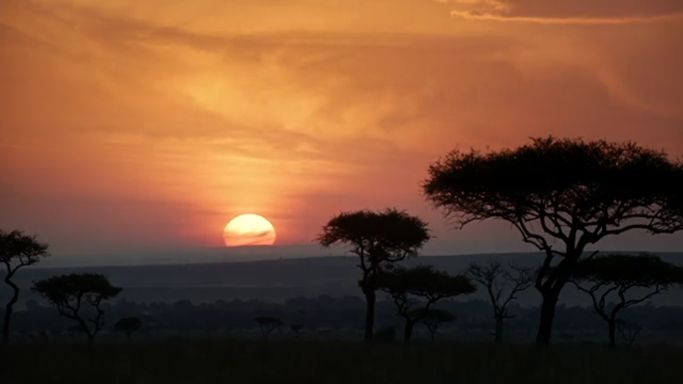
Where We Are Now
Bound and determined as they were to beat the corpse of this once great film franchise into the ground, Disney added it to their schedule of live action remakes. In recent years, Disney achieved success by remaking movies like Sleeping Beauty and The Jungle Book with live actors. Sleeping Beauty became Maleficent and told a new and interesting story that put the villain from the original movie in a new light. The Jungle Book was a faithful adaptation of the animated movie, but I feel like the King Louie sequence could’ve been skipped this time around, and nothing of value would’ve been lost.
Anyway, after that, a whole host of live action movies were announced, with The Lion King being the most ambitious of the bunch. Instead of using live animals to act out the film, a feat which would prove rather difficult even for a company that once drove a bunch of lemmings off a cliff in order to paint a false narrative about the species following the leader to their deaths, the company chose to animate the film with the same CGI used on the animals in The Jungle Book.
The problem with remaking something like The Lion King, which was an original story not directly based on an existing property (depending on whether you believe the Kimba conspiracy or not) is that there’s little room for variation. Aladdin has been retold over the years so much that you can get away with changes if you really wanted to, although it still followed the same general story. Dumbo was a completely different experience. Beauty & the Beast and The Jungle Book were mostly the same, although The Jungle Book altered the ending and arguably improved the movie. But The Lion King? What were they going to do, dig one of the earlier drafts out of the garbage?
So The Lion King ended up being nearly a shot for shot remake, with a few updates so that they could say they race-corrected it. For example, the role of Adult Simba went to African-American actor Donald Glover, who sounds a hell of a lot closer to the original Adult Simba, white actor Matthew Broderick, than The Lion Guard‘s also white actor Rob Lowe ever did. Clearly, Donald Glover should’ve been cast a lot sooner.
The rest of the cast was a mixed bag. For example, it’s quite clear that Zazu was voiced not by Mr. Bean but by Mr. Last Week Tonight, and it kind of showed in his delivery. But then I guess John Oliver is more likely to be available in the future if they want to do more with this continuity and they probably didn’t anticipate having to recast Rowan Atkinson quite so soon back in 1994.
Despite being a remake of the original, it felt like director Jon Favreau didn’t understand the original film. Just watch the “Circle of Life” sequence and you’ll see what I mean. It opened not by focusing directly on the rising sun but by showing it almost matter-of-factly as the opening lines of the “Nants Ingonyama” chant started. The whole point of focusing on the rising sun directly in the centre of the shot was because it’s a metaphor, it’s supposed to tie into a line early on in the film where Mufasa told Simba that one day the sun was going to set on his time as king and would rise with Simba as the new king.
Favreau also declined to follow Zazu on the way to Pride Rock, instead arriving using a crane shot, with Zazu just off to the side somewhere, tiny in the shot, his importance to the scene greatly diminished. I should stop now or this is going to turn into a shot by shot review of the film.
As someone intimately familiar with the dialogue in the original film, I can’t help but cringe at some of the alterations (Zazu’s rambling about a hornbill in his family thinking he’s a woodpecker felt like an improvisation that was thrown in), but occasionally, a bit of brilliance slipped into the script. Scar’s very early utterance of “long live the king” was very chilling, especially for fans of the original who know what Scar was eventually going to do to Mufasa. But again, I am not going to get into a shot by shot review of the film.
I will say that throughout the film, there was a lack of physical expression that hurt the film’s overall presentation. There were no more warm smiles or terrified faces to be seen. For the most part, the voice actors played their parts well, but the movie relied too much on making the voice cast do all of the heavy lifting in each scene.
So this is where we currently are. A CGI The Lion King was released in 2019 and there’s a CGI sequel announced and a lot of conflicting information circulating right now, including whether it actually is a sequel or whether it’s instead going to be a prequel, what that sequel or prequel is going to be about and how much of the already established Lion King universe is going to be brought into the new film. No one knows whether this is on purpose to mislead fans and keep them guessing, or if Disney themselves don’t know and are just announcing the film because they intend to make another one and haven’t decided what they’re going to do yet.
If you ask me, it sure looks to me like they don’t know what they’re doing.

